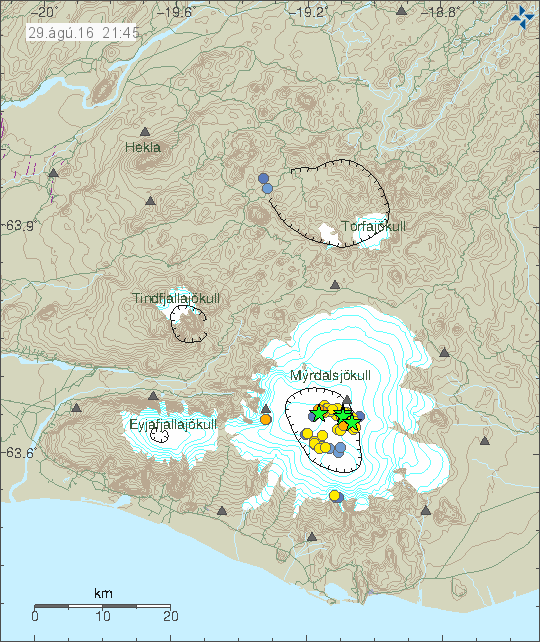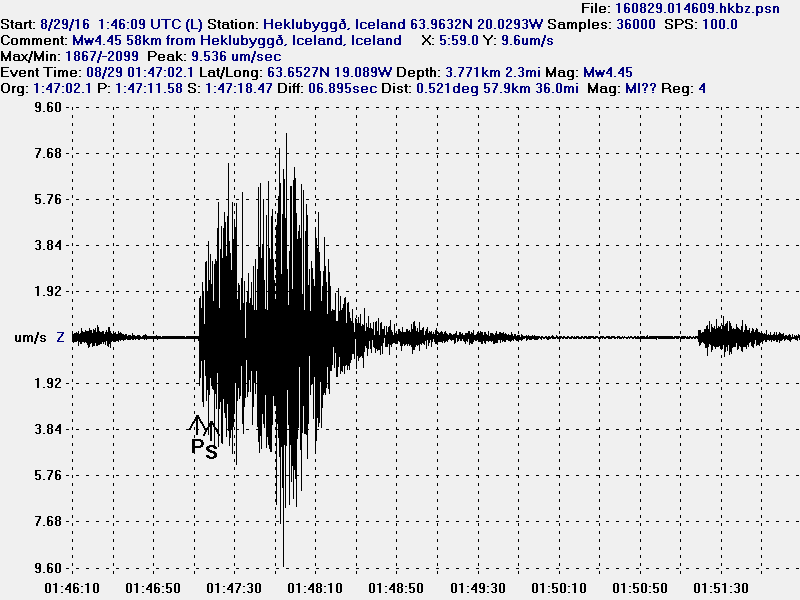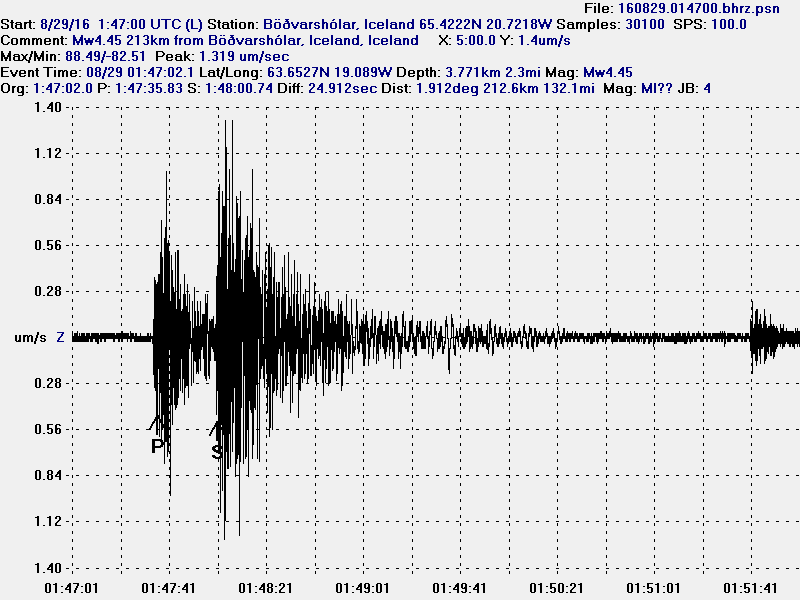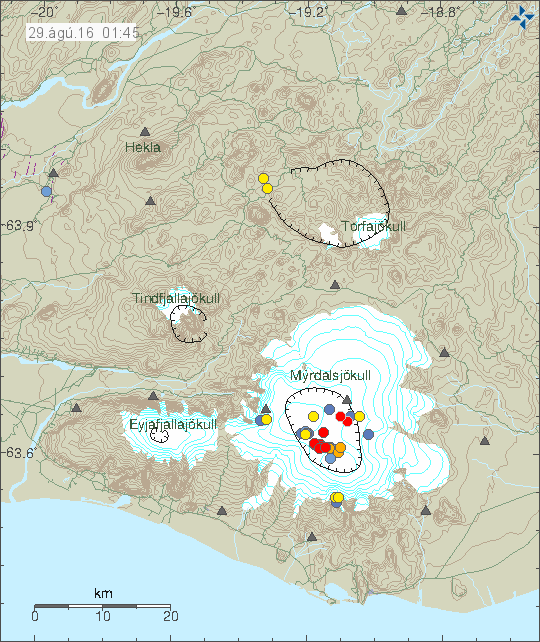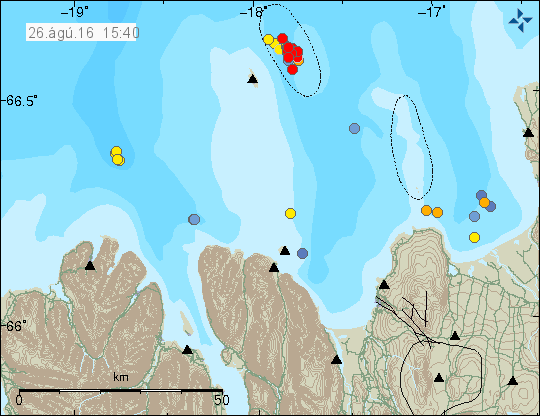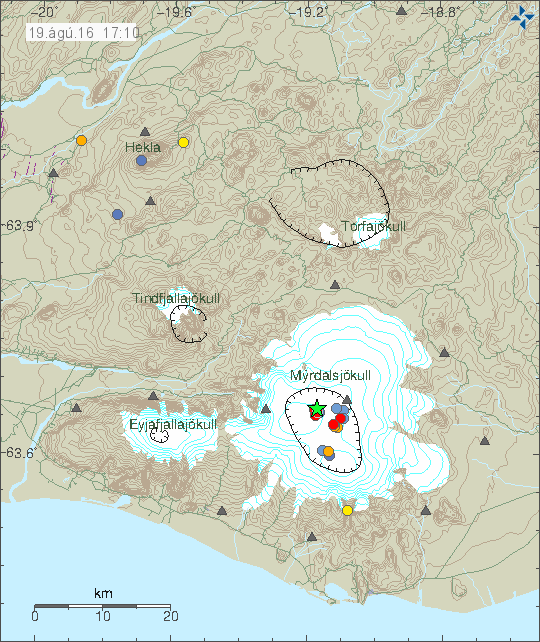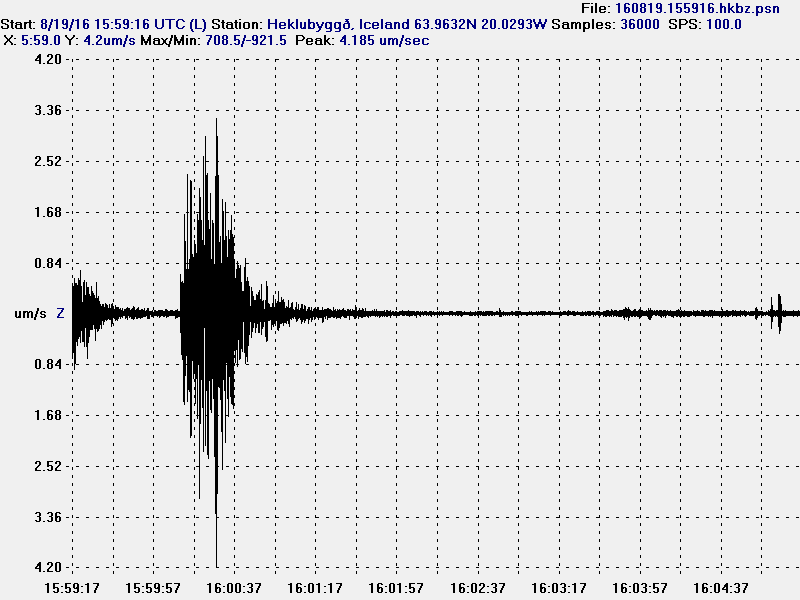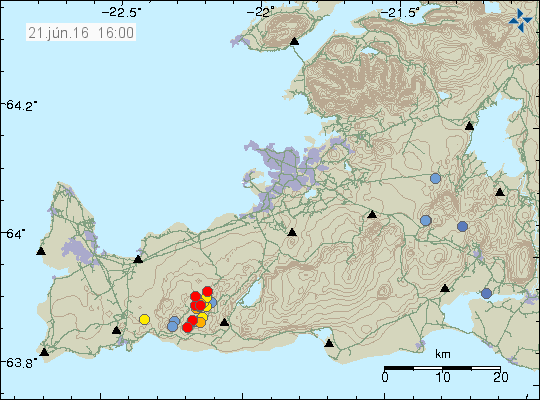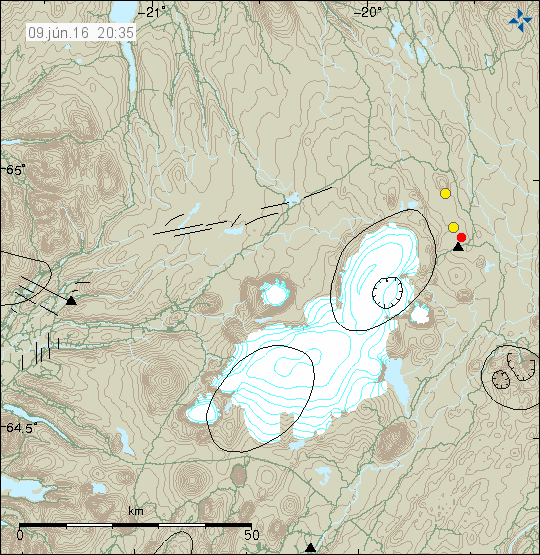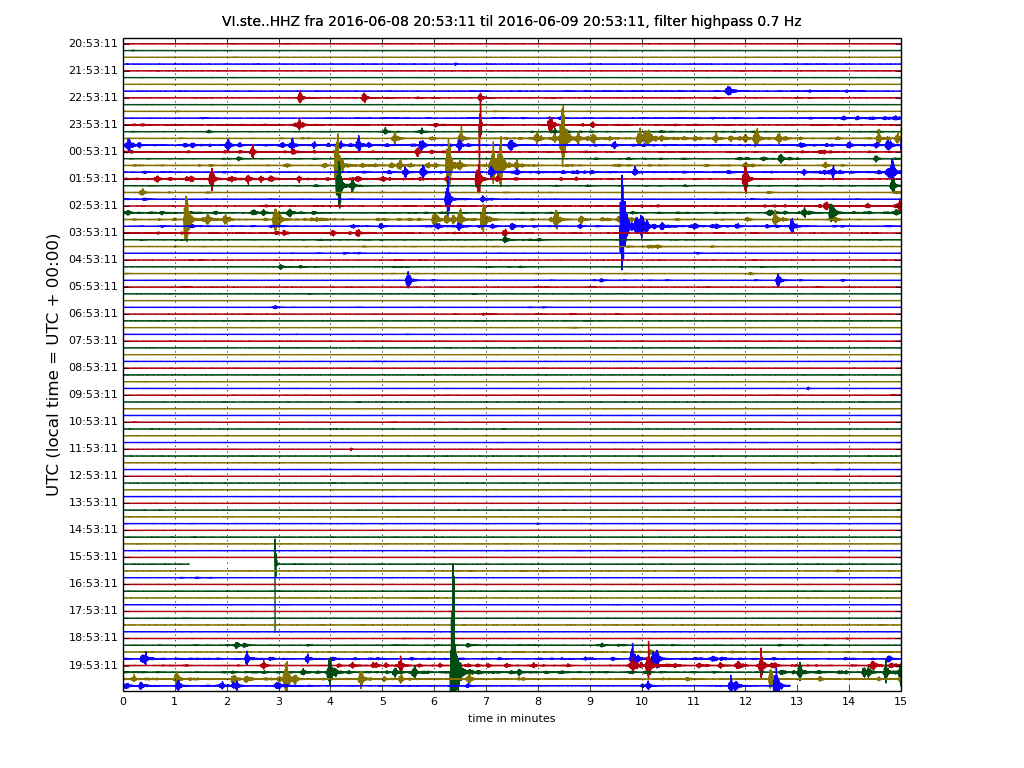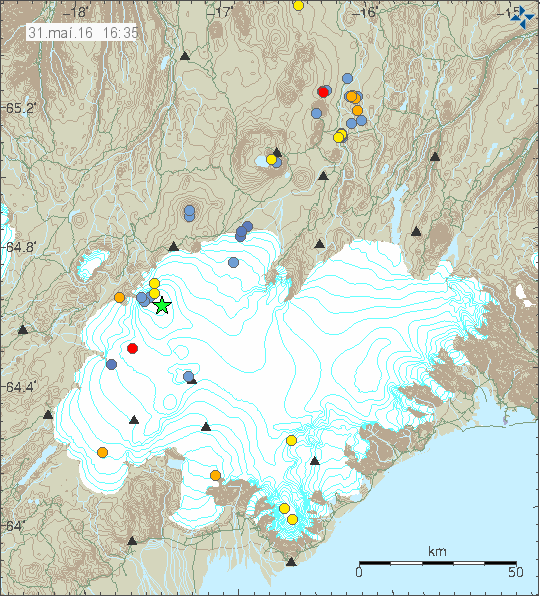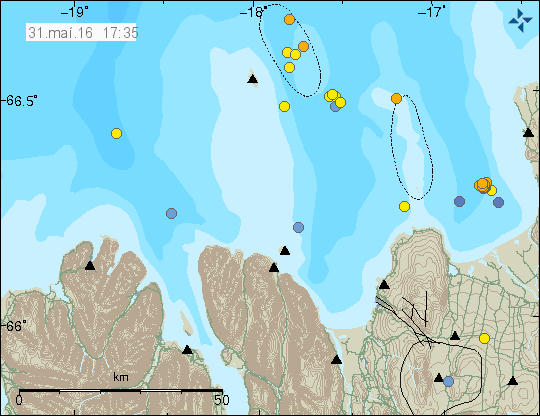Today (30-August-2016) an earthquake swarm started in Bárðarbunga volcano. The earthquake swarm took place in the caldera of Bárðarbunga volcano, as has been the case for the past few months. Nothing suggests that magma is on the move or that eruption is imminent, this seems to be tectonic or tectonic related activity in Bárðarbunga volcano after the eruption in 2014, that ended in February 2015.
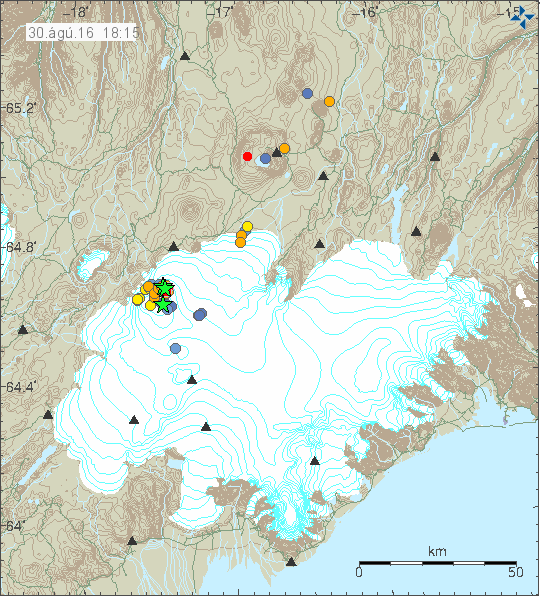
The earthquakes in Bárðarbunga volcano. Green stars are earthquakes larger then magnitude 3,0. Copyright of this image belongs to Iceland Met Office.
Largest earthquakes so far have the magnitude of 3,8 (at 13:33 UTC) and 3,4 (at 16:58 UTC), other earthquakes have been smaller in magnitude. The reason for this earthquakes is inflow of magma at depth (more than 10 km) into Bárðarbunga volcano. This is creating stress changes higher up in the crust, resulting in earthquake swarms. More earthquakes can be expected from Bárðarbunga volcano in next few hours to days. This type of earthquake activity almost happens weekly at the moment and that has been the activity pattern since September-2015. I’m not expecting any change in this activity pattern for next few months.

